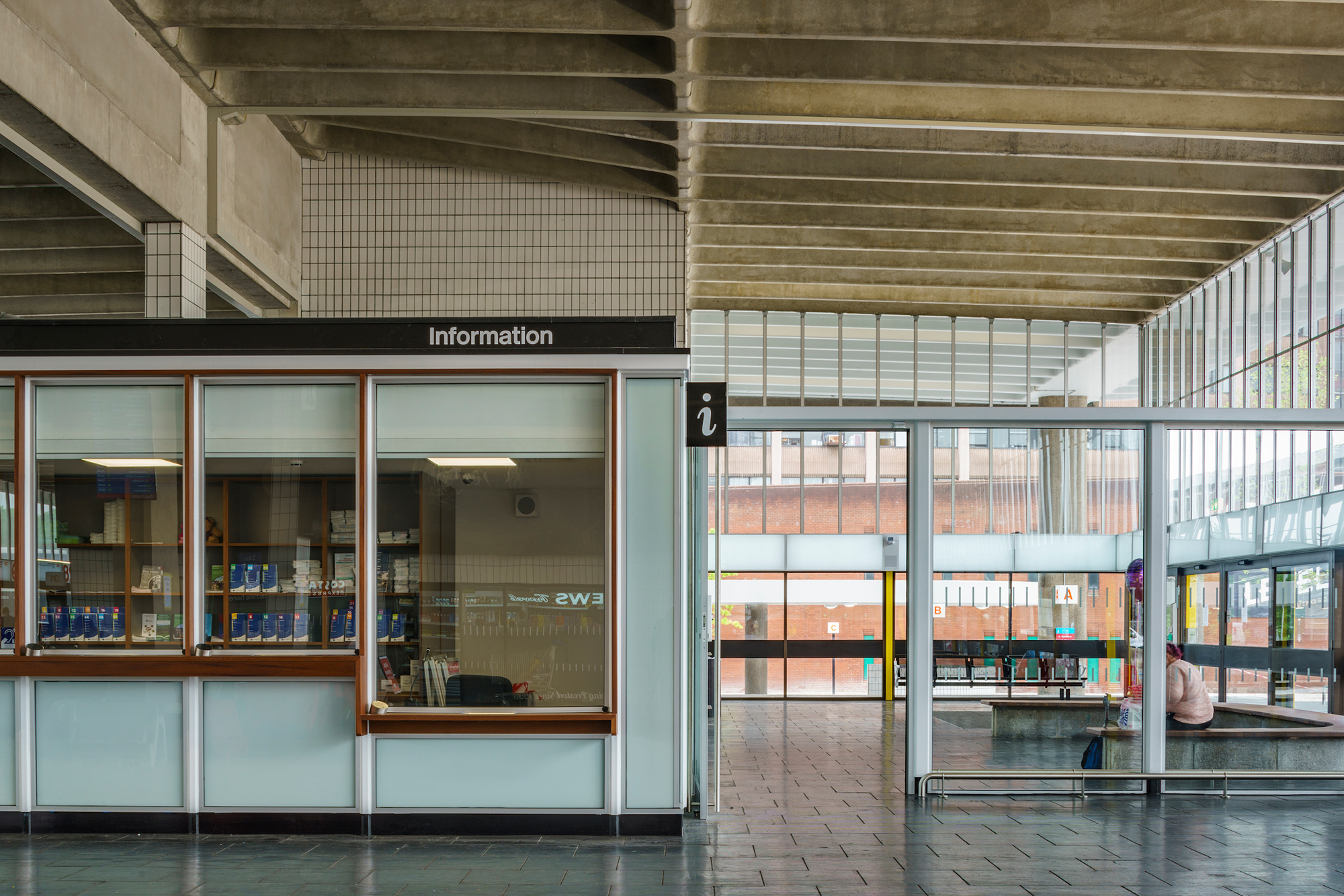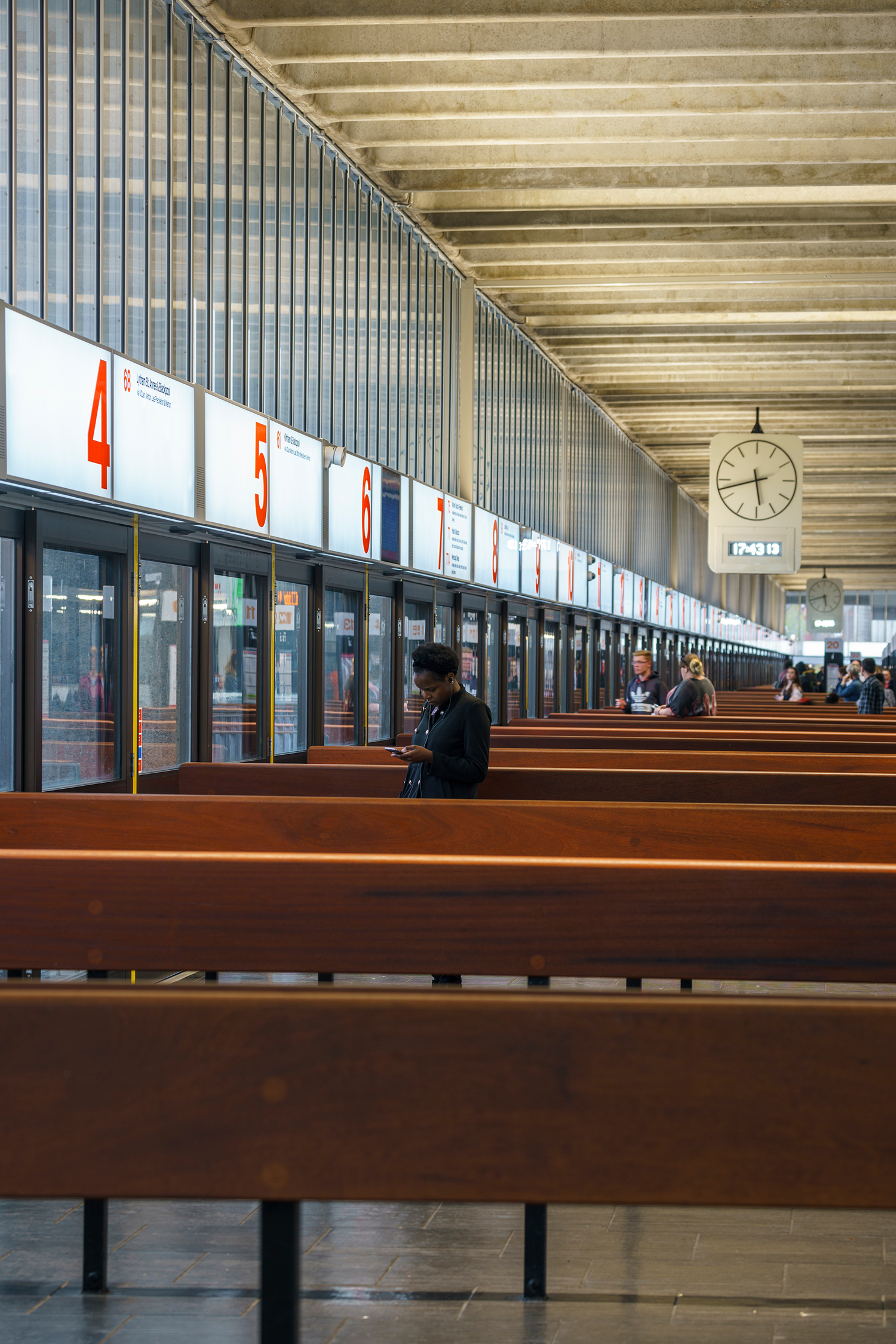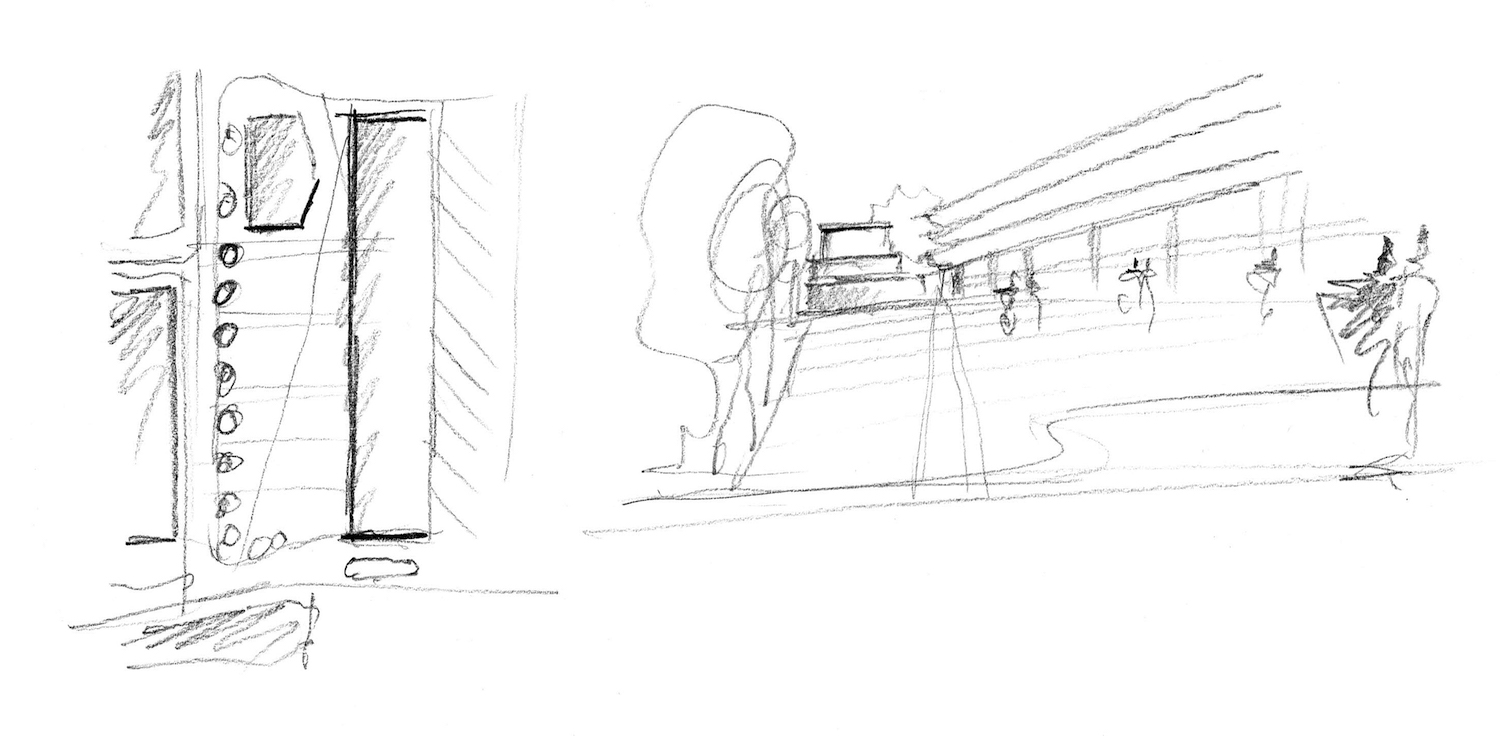Brutalism Resurrected: Bus Station in Preston

Foto: Gareth Gardner
After opening in 1969, the bus station in the northern English city of Preston represented a large concrete island in a sea of asphalt. Eighty bus platforms formed rows on both sides of the 190-m building designed by Building Design Partnership and Ove Arup and Partners. The open area accessed from the west served as a bus parking lot where passengers traversed makeshift, barricaded footpaths once it was determined that the original pedestrian underpasses had not been met with great acceptance. The four upper storeys and the roof of the structure are still home to a parkade featuring 1,100 parking spots in a split-level arrangement. Cars used two curved bridges to move directly from the road onto the first upper level and return to the outdoors.
Seven years ago this bus station, which is now considered a leading example of postwar British Brutalism, was threatened with demolition. Despite protest from citizens, the City of Preston wanted to replace the station with a shopping centre. In 2013, a rethink led to the building’s recognition as an historical monument thanks to a proposal from the Twentieth Century Society. In 2016, an architecture competition to refurbish the station took place; John Puttick Associates carried the day. Along with meticulous restoration work, the commission also involved a car-free redesign of the forecourt to the west of the structure. The building’s island situation was no more, the bus platforms on the west side were removed: this area now serves decidedly as an entranceway. In the middle of the hall, a core with two storeys in most places now accommodates shops, cafés and toilets.
The particular quality of this refurbishment project lies in the fact that John Puttick Associates have, to a great extent, preserved the 1960s atmosphere inside the station. The rubber flooring is original; the ceiling of prefab concrete panelling has merely been cleaned, and many fittings added at later times have been removed in order to let the station again assert itself as an artistically cohesive space.
Further information:
Landscape architects: Lancashire County Council Highways Department, Plant-IE
TGA-planning: Skelly & Couch






















